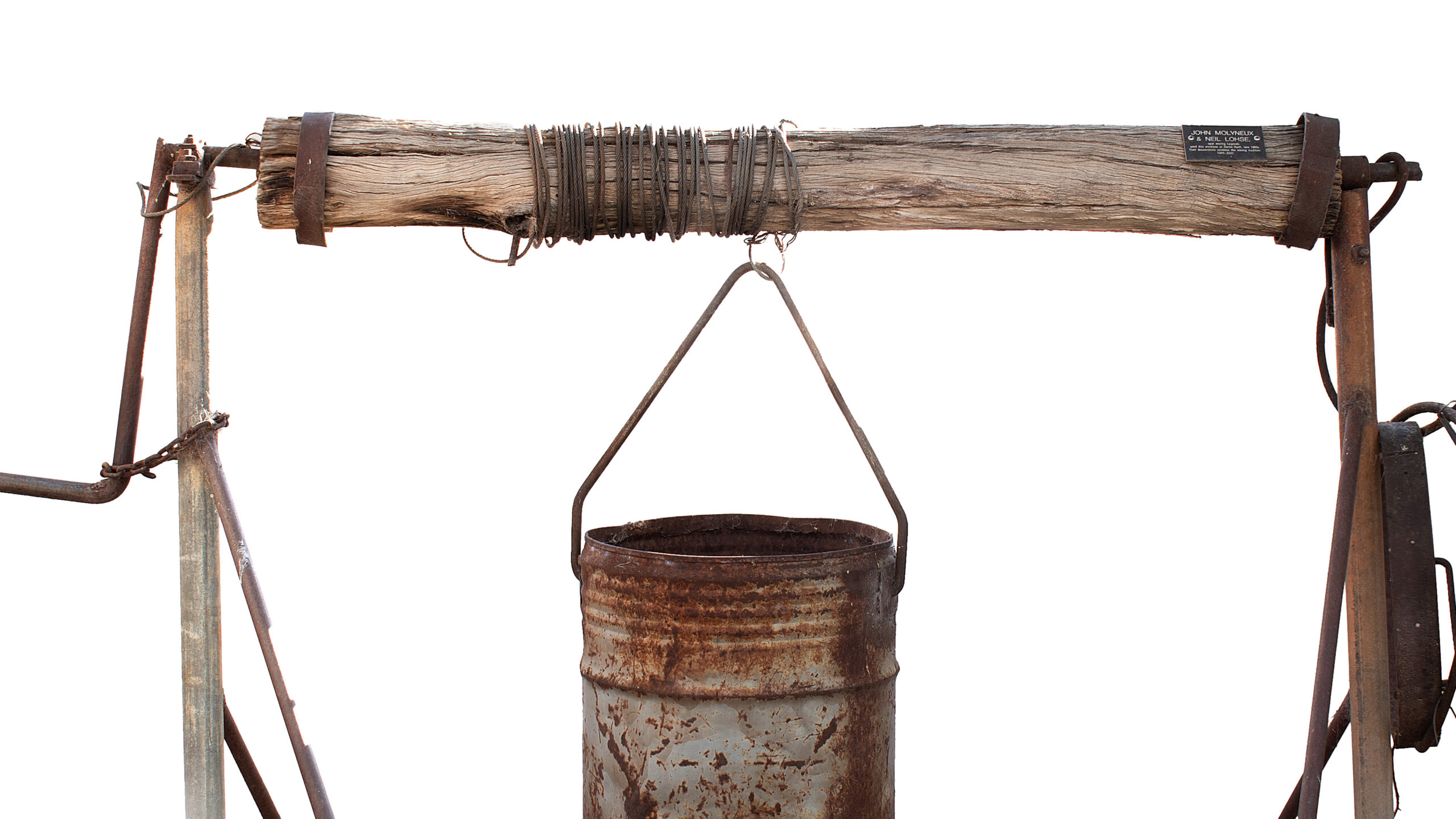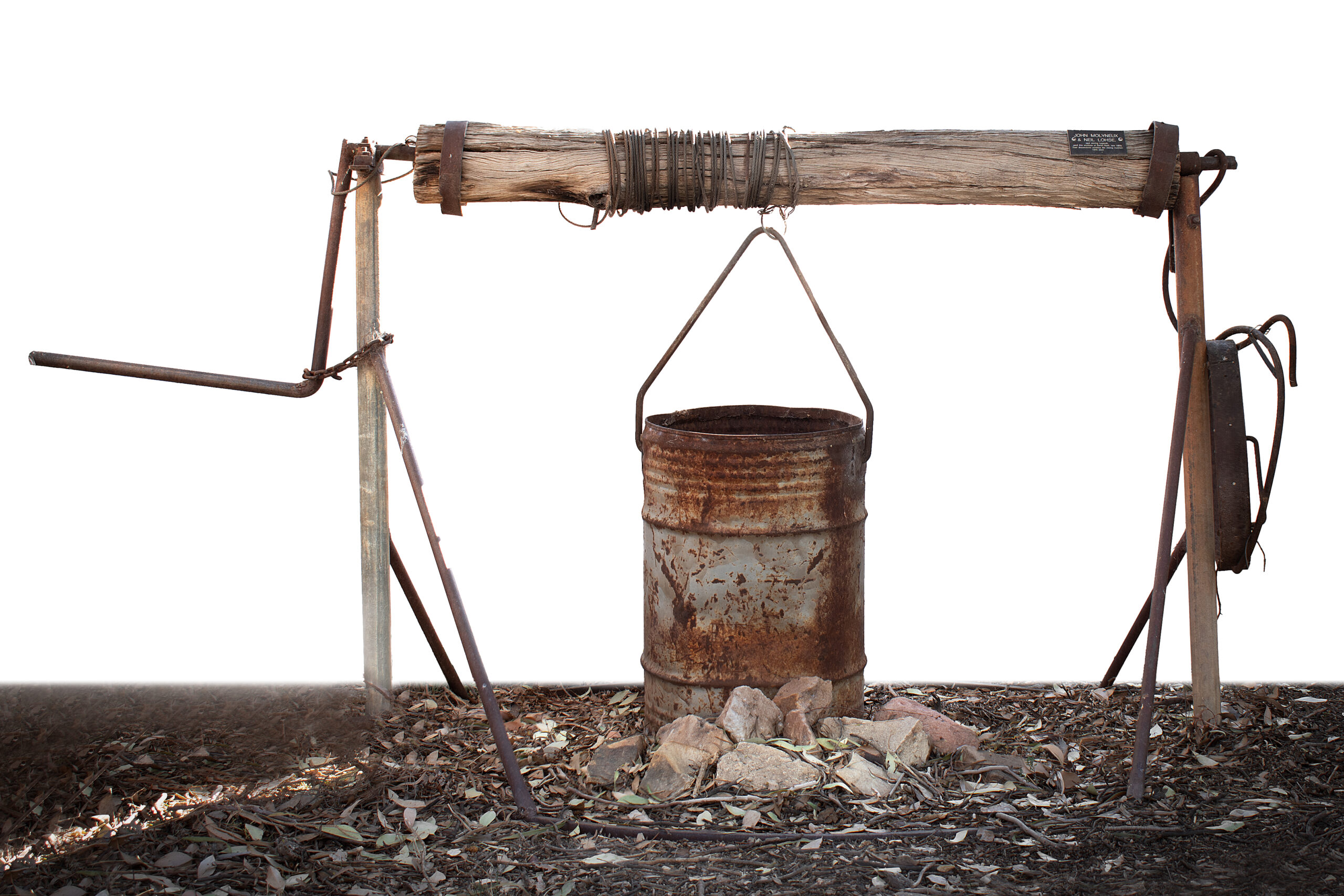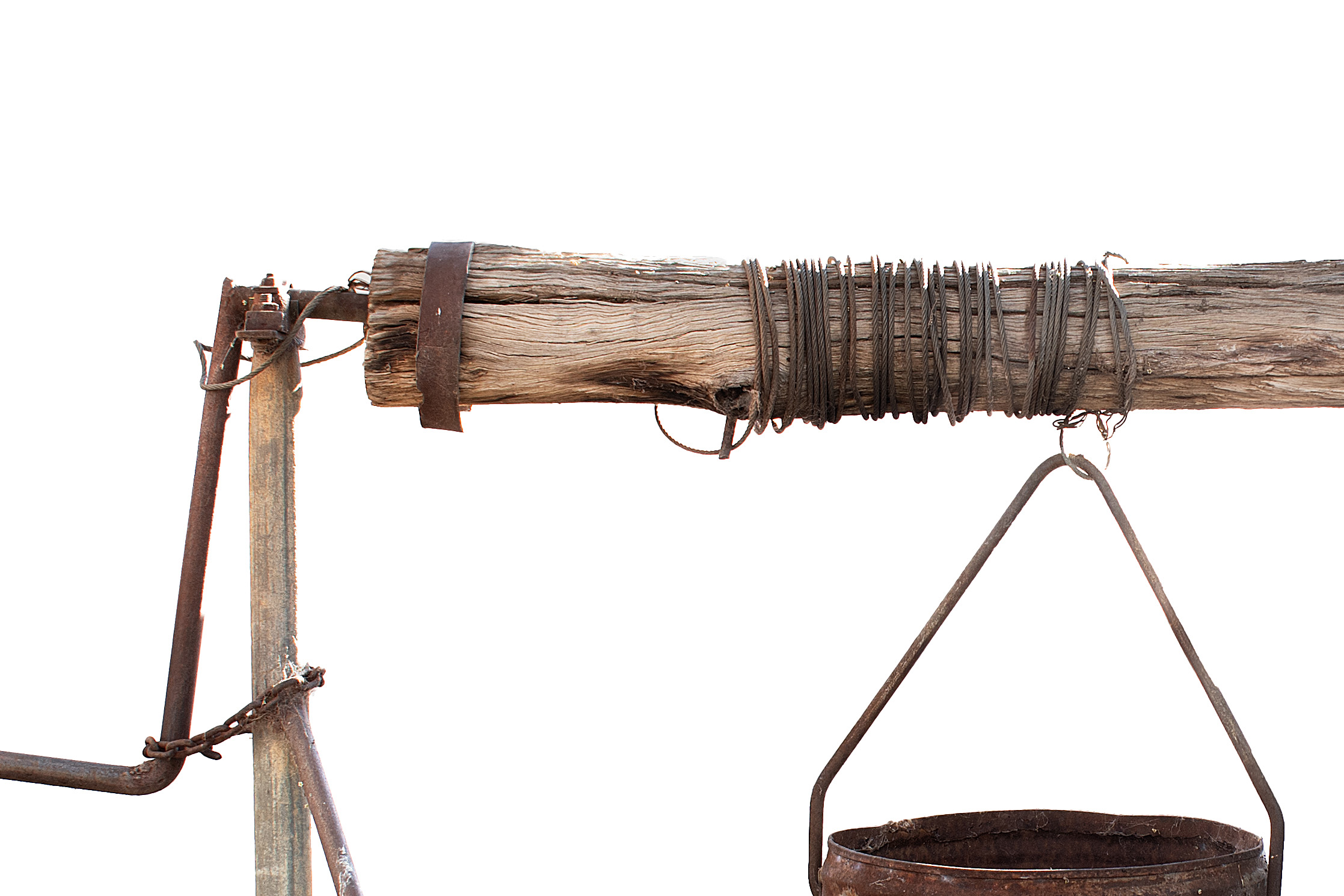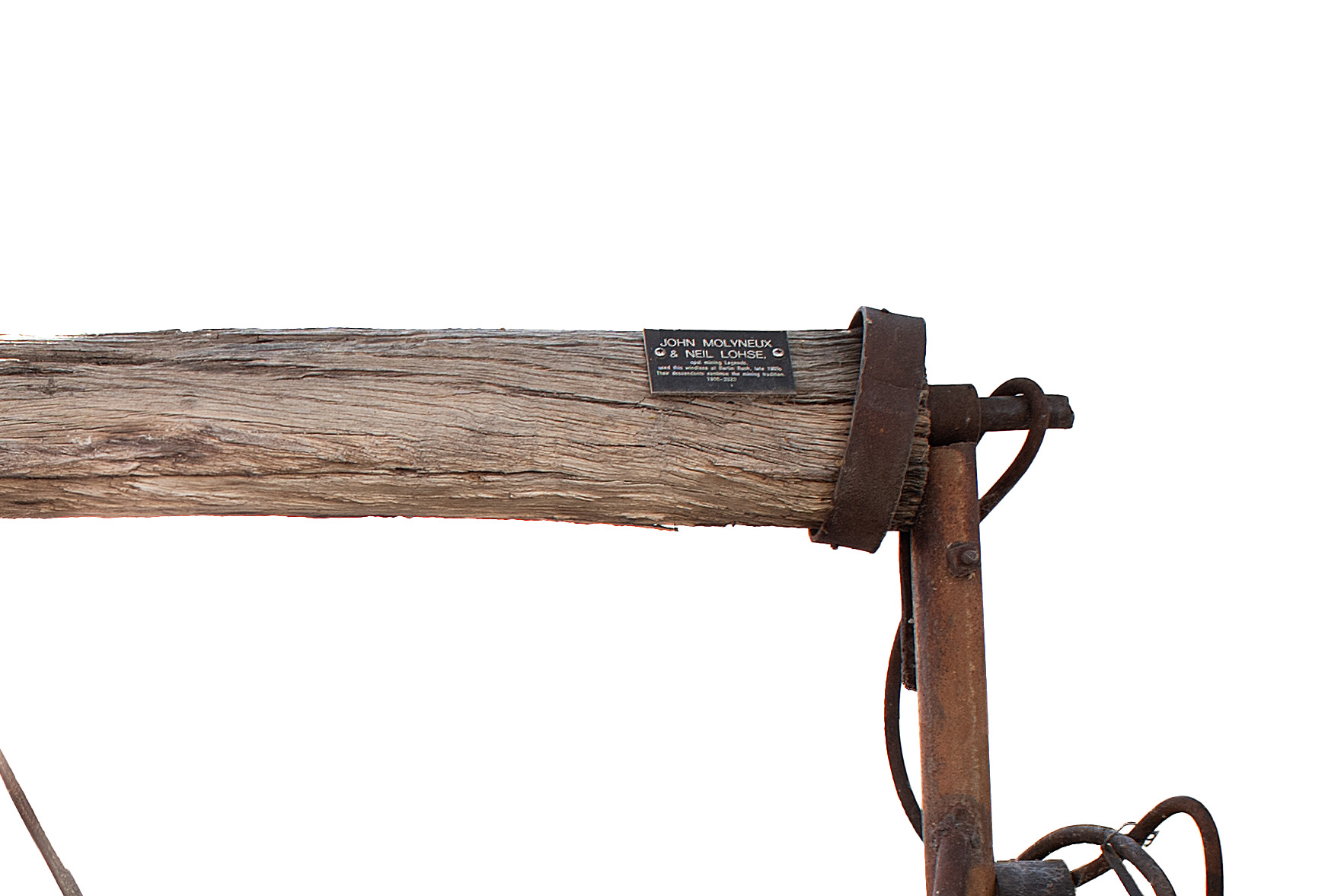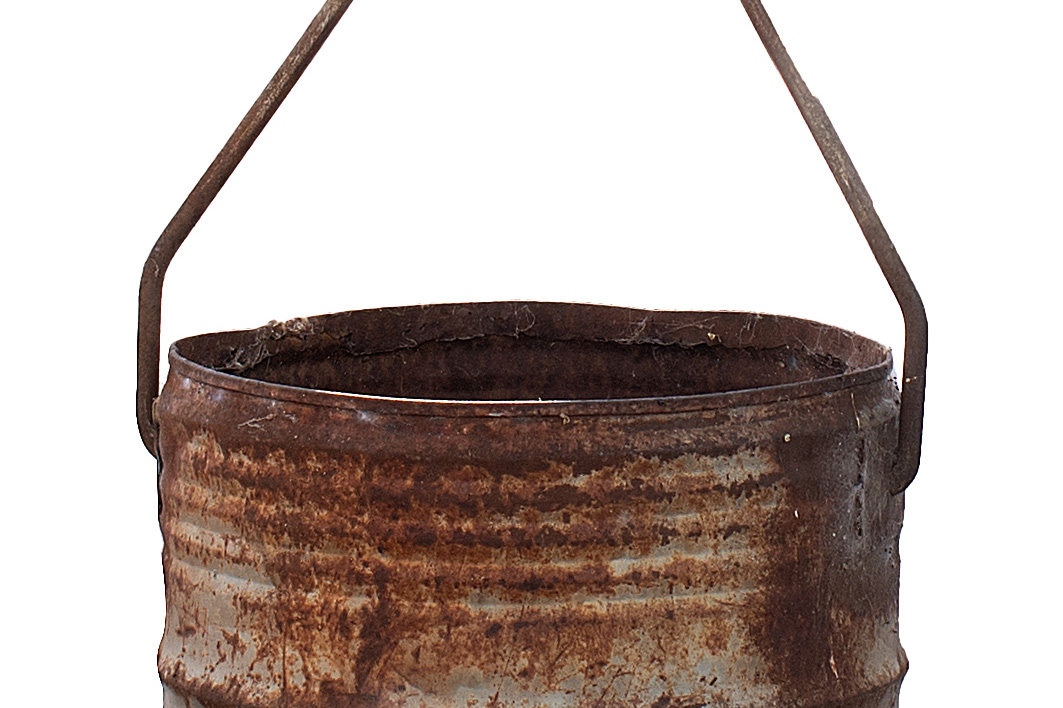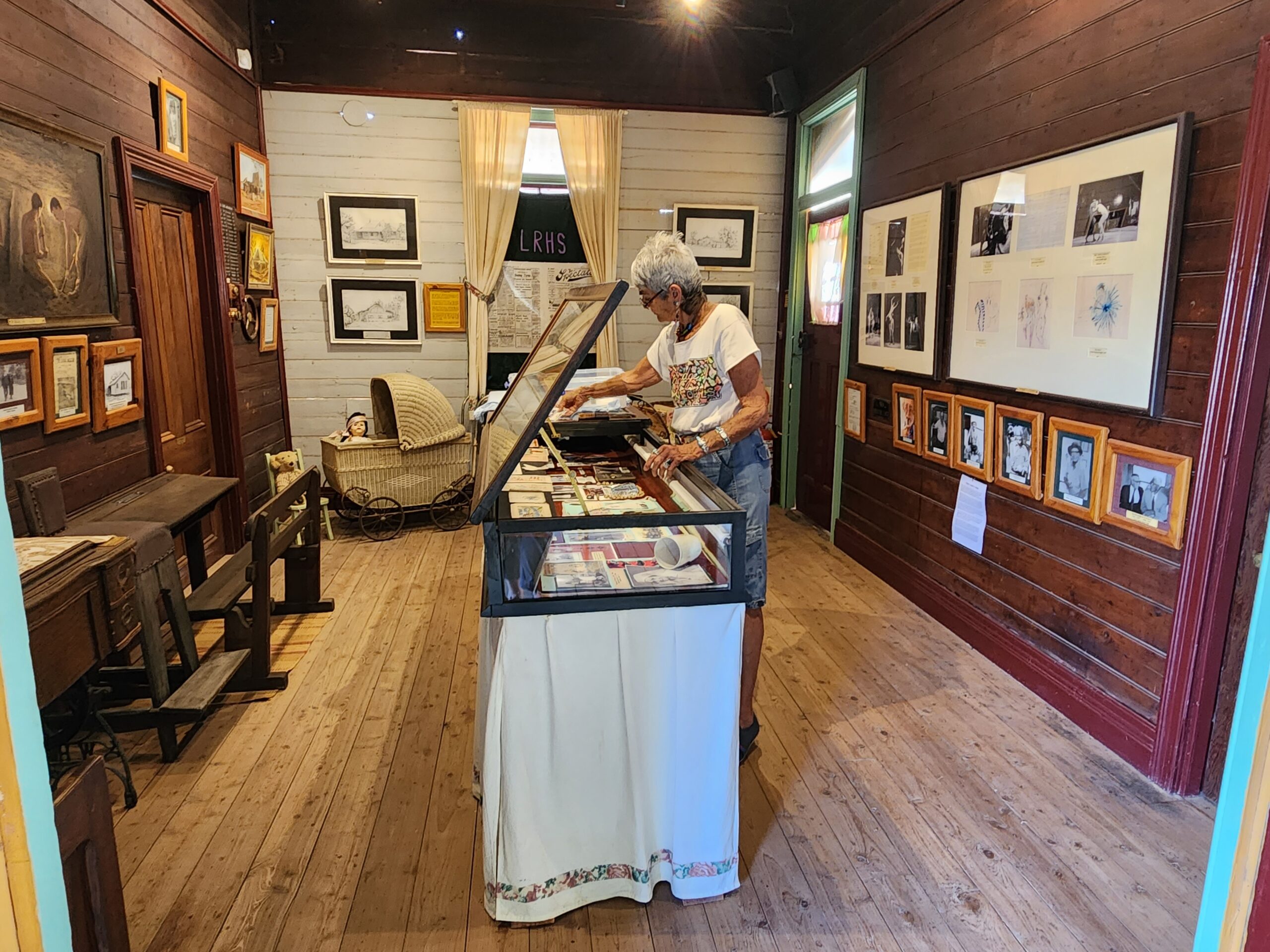Raised at the Ridge
A Delicate Reminder of the Ties that Bind
Known as the ‘miner’s mate,’ windlasses started to spring up on the morrillas (limestone ridges) of the Yuwaalaraay lands known as Wallangulla in 1900. Fast forward nine years, and the skyline of what had become known as ‘Lunatic Hill’ was littered with them.
Used to winch up dirt-encrusted opals in ox-hide buckets to be picked over in the light of day, without a windlass, miners would be climbing up to eighteen metres with buckets of rocks in severe heat.
With every rush came an influx of hopeful miners. John Molyneux’s (1933–1992) great-grandparents, the Browns, were among the early arrivals, settling in Lightning Ridge in 1908. John and his father, Arthur, followed suit in the 1950s, moving from Wee Waa to try their luck. This windlass was used by John Molyneux and his brother-in-law Neil Lohse (1934–1992) when they mined the ‘Telephone Line’ in the 1950s.
Fastened to the windlass is a small, faded ribbon left by John’s wife, Janet (Jen) Molyneux (1934–2010) decades ago. Jen’s delicate decoration seems at odds with the harsh living conditions the family endured. The couple raised six kids in a tiny two-bedroom tin shack with a dirt floor, sharing the space with Jen’s blind father. There was no running water or electricity, while John toiled underground, Jen literally kept the home fires burning.
Laundry was an all-day affair, done over an open fire with a copper and a wringer in 40°C heat. When John struck it lucky and bought Jen a generator-powered washing machine, people came from miles around to gawp; they’d never seen a washing machine before. Cooking over an open fire was just as challenging, especially when tasked with feeding a family of nine.
Women’s options for socialising were few: church, the pub, or Dawson’s General Store. Dawson’s was the heart of the community and a vital connection to the outside world. Every fortnight, when the ice cream, supplies and mail arrived, women would gather to share a brief moment of respite from their domestic toil, while their children savoured the fleeting icy treats.
Today, in a world of online shopping, social media, and next-day delivery, this sounds like ancient history, but it was only 60–70 years ago. The faded ribbon fastened to the windlass is a gentle reminder of the women whose domestic and emotional labour were the ties that bound outback families together.


